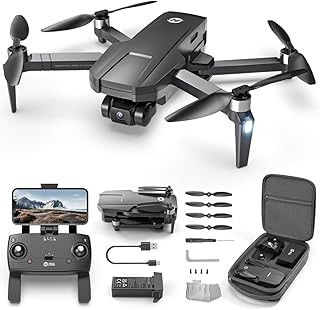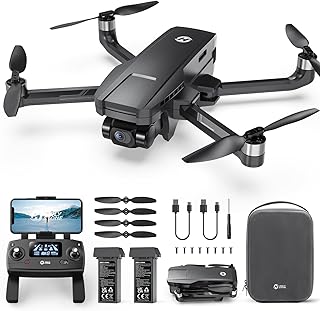Holy Stone Drones: A Potential Asset for Search and Rescue Operations
Holy Stone drones, known for their affordability and user-friendliness, offer a compelling case for their potential use in search and rescue (SAR) operations. While not designed specifically for this purpose, their capabilities can be leveraged in specific situations. Here's a breakdown of how they can help and the limitations to consider:
Potential Benefits:
* Rapid Deployment: Holy Stone drones are portable and can be deployed quickly to the scene, especially in hard-to-reach areas.
* Aerial Reconnaissance: Their cameras, though not professional grade, can provide real-time aerial footage of the search area, helping locate missing persons, assess damage, and identify potential hazards.
* Thermal Imaging: Some models offer thermal imaging capabilities, crucial for locating individuals lost in dense forests or at night.
* Cost-Effectiveness: Compared to specialized SAR drones, Holy Stone models offer a budget-friendly option, making them accessible to smaller volunteer groups or communities.
Limitations:
* Range and Flight Time: Holy Stone drones have limited range and flight time compared to professional SAR drones. This restricts their effectiveness in large search areas or for prolonged missions.
* Weather Sensitivity: They are susceptible to wind and rain, making their use challenging in adverse weather conditions.
* Payload Capacity: Holy Stone drones generally have limited payload capacity, making them unsuitable for carrying heavy equipment or rescue supplies.
* Lack of Specialized Features: They lack advanced features such as obstacle avoidance, automated flight, or specialized sensors designed for SAR operations.
* Legal Regulations: Operating drones for SAR purposes may require specific licenses and permissions, depending on the location and the nature of the mission.
How Holy Stone Drones Can Be Used:
* Initial Reconnaissance: Used to quickly assess the situation and identify potential search areas.
* Search for Missing Persons: Used in open areas or along known trails, especially in daylight hours.
* Identifying Potential Hazards: Used to assess the safety of the search area and identify any obstacles or dangers.
* Providing Live Feed: Offering real-time footage to SAR teams on the ground, enabling better coordination and decision-making.
Conclusion:
While Holy Stone drones may not be ideal for all SAR operations, they offer a cost-effective solution for specific scenarios, especially when resources are limited. Their affordability and ease of use make them accessible to a wider range of organizations and individuals.
However, it's essential to understand their limitations and use them judiciously, ensuring proper training and adherence to regulations. Ultimately, their effectiveness depends on the specific situation and the expertise of the operator.
Important Considerations:
* Training: Operators need to be properly trained in drone operation, search techniques, and relevant safety protocols.
* Regulations: Ensure compliance with all local and national regulations regarding drone operation and data privacy.
* Data Collection: Handle data collected responsibly, ensuring ethical use and respect for privacy.
* Collaboration: Work closely with professional SAR teams to ensure safe and effective integration of drones into existing operations.
By recognizing the potential benefits and limitations, and operating them responsibly, Holy Stone drones can become a valuable tool in the toolbox of SAR professionals, contributing to faster and more efficient rescue efforts.


